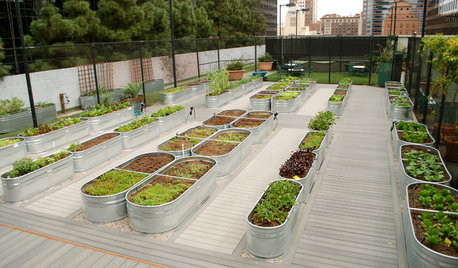Leave Fruit Aesthetics to the Consumer
by Gary Galles
[Posted February 24, 2005]
Few Americans consider themselves at significant risk from ugly or misshapen
tomatoes. But the Florida Tomato Commission (FTC) "protects" those of us
outside the state against any of their winter tomato growers who want to put
"product of Florida" on any fruit (yes, tomatoes are fruit) not up to
standard in size, shape, skin quality or color. As a result, we won't be
seeing any Florida UglyRipe tomatoes this winter.
UglyRipe tomatoes are the result of a decade of experimentation with
heirloom tomatoes by Joe Procacci, triggered by complaints that the tomatoes
now on supermarket shelves are taste-impaired. Customers claim they bring
back the luscious taste they remember from "the good old days."
Unfortunately, very few of them meet the FTC's standard of beauty for
out-of-state export, because they fail the roundness standards. (The dispute
's divisiveness is illustrated by the FTC claim that almost three-fourths of
the fruit passes the standards, but Procacci claims it is only one-eighth,
with over three-fifths of the crop, clearly not up to those standards, not
even submitted.)
Unfortunately, this issue is just the latest in a long line of disguised
consumer rip-offs in the name of consumer protection, created by government
enforced agricultural cartel marketing organizations. Those agricultural
marketing orders trace to New Deal legislation to "save" agriculture by
giving these organizations, dozens of which still survive, the power to
coercively impose their standards on even unwilling members. (i.e.,
mandating what in other industries would trigger antitrust prosecution for
being anti-consumer.)
In effect, the government has delegated them the power to criminalize
selling fruit other growers deem unfit to sell or selling it in ways they
don't approve of, even when buyers, fully inÂformed about any shortcomings,
would be eager customers. (Procacci had to turn away out-of-state buyers and
take about $3 million in losses when denied an exemption from the roundness
rules in January.)
The actual purpose of the restriction on selling these "lower quality"
Florida tomatoes that consumers are begging to buy is to allow other tomato
growers to restrict competition from versions customers might well prefer.
By limiting the alterÂnatives to their pretty tomatoes, other Florida tomato
growers (who dominate America's winter tomato market) raise their profits at
consumer expense. That purpose of raising producer profits by harming
consumers is what this restriction shares with often even more stringent
ones (extending to outright bans on selling sub-standard fruit at any price)
that have been imposed since the Depression on cantaloupe, peaches, pears,
nectarines, strawberries, plums, and a host of other fruits.
Despite the obvious anti-consumer effect of imposing such restricted
choices, the FTC echoes claims that other government-enforced agriculture
marketing cartels have offered in defense. Unfortunately, those arguÂments
cannot stand scrutiny any more today than they did in the past.
Cartel defenders claim the appearance or quality of produce is the essential
element that sells it, so it is necessary to restrict offerings to only the
finest appearing fruit. As the FTC's Reginald Brown put it, "The reality of
the marketplace is that when you go into a supermarket, you look at 'em, you
don't bite 'em." But if that is so, appearance regulations are unnecessary.
If only the prettiest fruit will sell, ugly fruit would not attract
customers and therefore would pose no danger to the profits of other
growers.
Restricted competition beneficiaries also claim that allowing ugly or lower
quality fruit to be sold would ruin the market or cripple the inÂdustry. But
if only fruit meeting official standards would be freely chosen by
customÂers, the market cannot be crippled by allowing other fruit to be
offered for sale; if the industry would be crippled as a result, then the
argument that consumers would choose only fruit up to those standards is
false.
Restriction supporters argue that government must enforce some sort of
minimum stanÂdards to protect consumers. But consumÂer protection requires
no such restraints (perhaps made most transparent by the fact that Florida
consumers are free to buy UglyRipes without any such protections). At most,
that is an argument for informing customers about important quality
dimensions, but leaving them free to make their own choices.
To justify further restrictions would require that consumers are too
ignorant, even when fruit is graded and available for inspection, to select
what to buy. That, in turn, would require that consumers cannot either see
or taste for themselves. Further, it would also require that supermarkets
overlook their own self-interest in not tying up their shelves and hurting
their reputations by carrying products their customers would reject.
Even if quality grading was considered necessary, there is no need for
government involvement or enforcement. Because consumers are willing to pay
more for what they consider higher quality fruit (including where they deem
taste more important than looks), growers will find ways to verify the
various important dimensions of qualiÂty. But this can be done through
voluntary cooperative efforts or brand names as a guaranÂtee of quality
(which is the purpose for the UglyRipe name, which would be the last name
one would pick if trying to get people to confuse your fruit with pretty
competitors).
Florida's existing tomato reputation (apparently for pretty but tasteless
tomatoes) could easily be defended in less onerous ways, as well. For
instance, they could allow labeling of Florida heirloom or Florida UglyRipe
tomatoes with no risk of confusing customers about what they were getting.
But refusing to pursue such an easy alternative solution to the alleged
problem indicates that it is not the real reason for the restriction.
The claims by the FTC that their purpose is to help consumers rather than
themselves at consumer expense is also made clear by their history of
blatant attempts at protectionism against competing tomato producers in
Mexico. They have brought multiple allegations of dumping, found groundless
(a minor miracle, given how our dumping complaint rules are stacked on the
side of American plaintiffs).
When NAFTA took away some of Florida's protections, they attempted to impose
new barriers that would fly under the public radar. In particular, they
tried to impose FTC packing requirements on others (i.e., Mexico) selling
winter tomatoes in the U.S. Given that U.S. tomatoes are picked green for
ease of handling and then ripened with gas, while Mexican tomatoes are
picked ripe (as are UglyRipes), those standards would have imposed
substantial damage, and therefore a substantial barrier, on Mexican
tomatoes.
The arguments for government enforced cartel restrictions on the sale of
ugly fruit, wherever they fall on the gamut from outright sales bans to what
can be correctly labeled as produced in Florida, are unbelievable,
self-serving justifications for consumer rip-offs. They are as absurd as
restricting sales of Fords for not providing Mercedes quality, hamburÂger
for falling short of top sirloin, or every education not up to Ivy League
stanÂdards.
The arguments for restrictions on sales of ugly fruit are so "rotten" that
they are logically insupportable. Our taste buds can adequately distinguish
good tomatoes from bad for ourselves, allowing us to get beyond the surface.
But unfortunately, that is not true about government "solutions." There,
people seldom look beyond surface arguments (particularly to see the
unjustified uses of coercion entailed), and those using flimsy pretexts for
self-aggrandizement can therefore effectively mislead those who don't think
very hard about them. Until we do think carefully about such assertions,
such abuses will persist. And that is true in uncountable areas of
government involvement, not just for a government-enforced rip-off of
American tomato lovers.
______________________________
Gary M. Galles is a professor of economics at Pepperdine University. Send
him MAIL, and see his Mises.org Daily Articles Archive.


















Bruce_in_ct
althea_gw
Related Professionals
Birmingham Landscape Architects & Landscape Designers · Lowell Landscape Architects & Landscape Designers · Maple Heights Landscape Architects & Landscape Designers · Mahwah Landscape Contractors · Milton Landscape Contractors · Mission Viejo Landscape Contractors · Shaker Heights Landscape Contractors · Tacoma Landscape Contractors · Weymouth Landscape Contractors · Foothill Farms Decks, Patios & Outdoor Enclosures · Gaithersburg Decks, Patios & Outdoor Enclosures · Grand Rapids Decks, Patios & Outdoor Enclosures · Hampton Bays Decks, Patios & Outdoor Enclosures · Oswego Decks, Patios & Outdoor Enclosures · San Diego Decks, Patios & Outdoor Enclosuresmarshallz10Original Author
althea_gw
Bruce_in_ct
Organic_johnny
marshallz10Original Author
socal23
alfie_md6
Organic_johnny
alfie_md6
vgkg Z-7 Va
lilyroseviolet